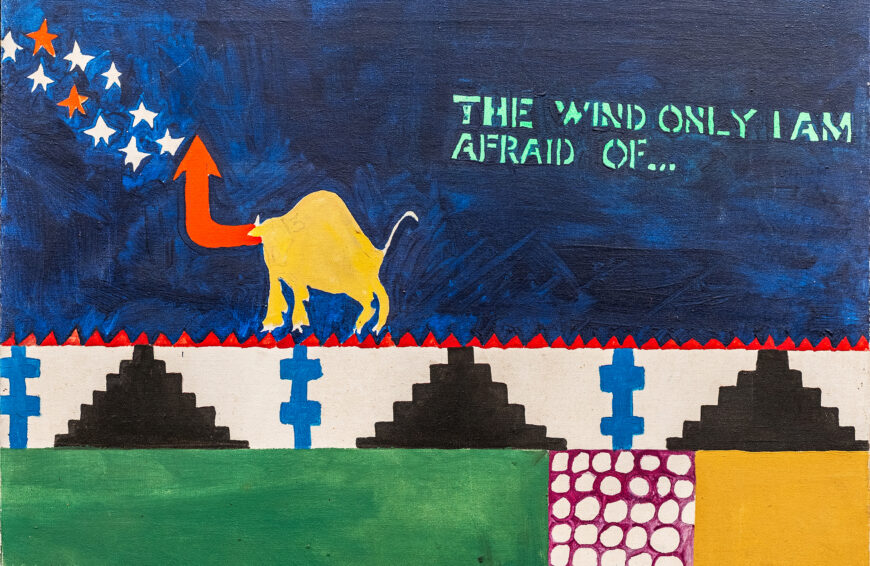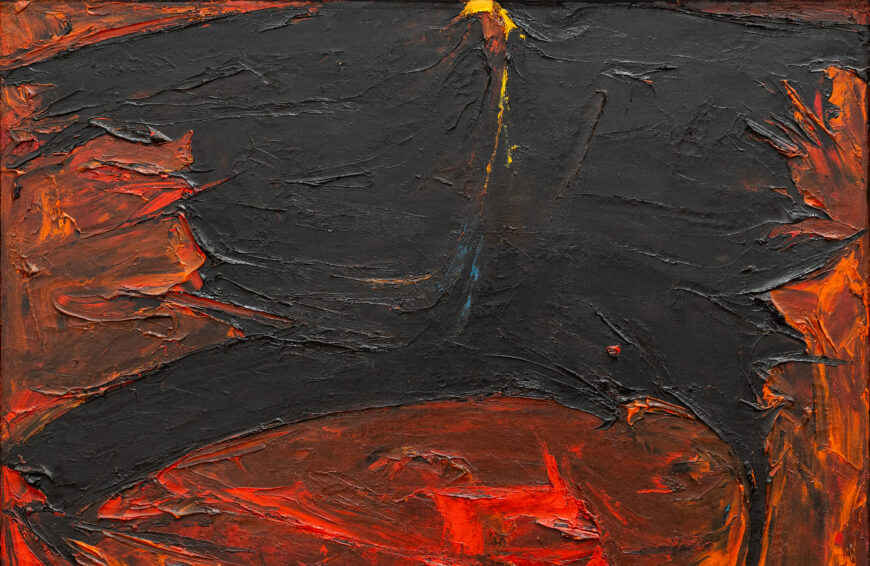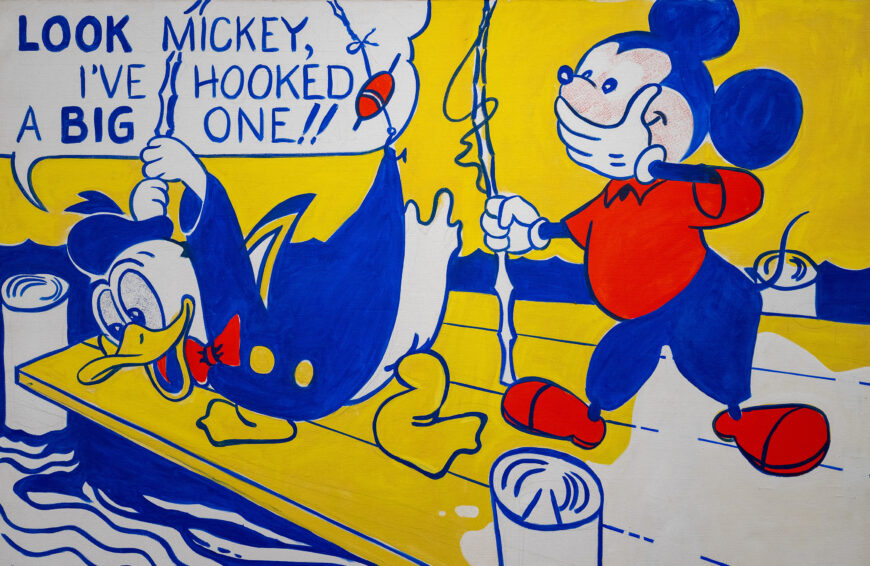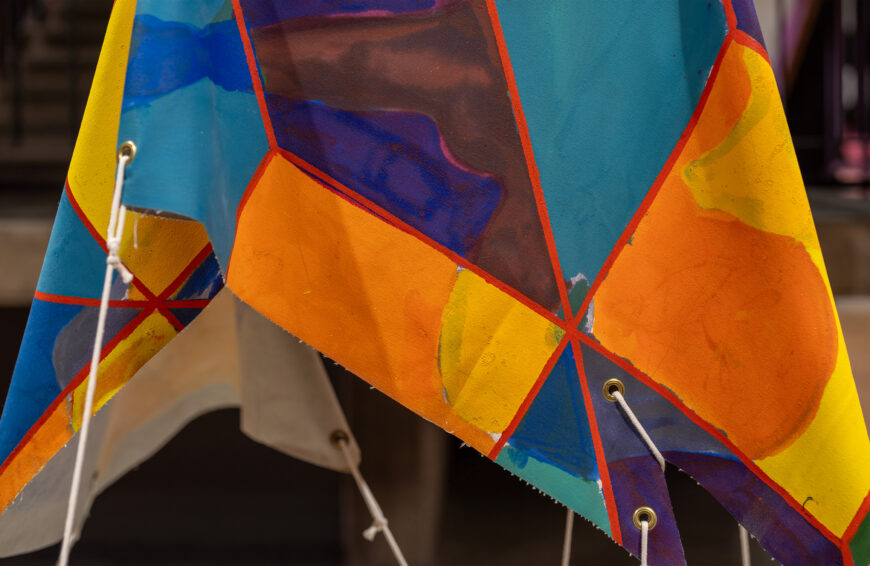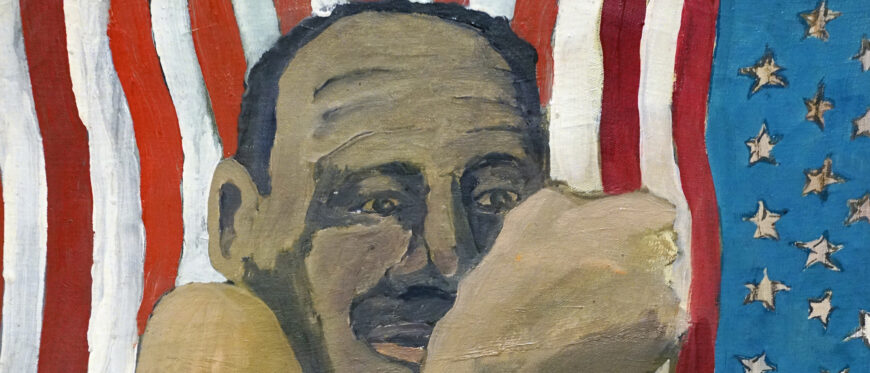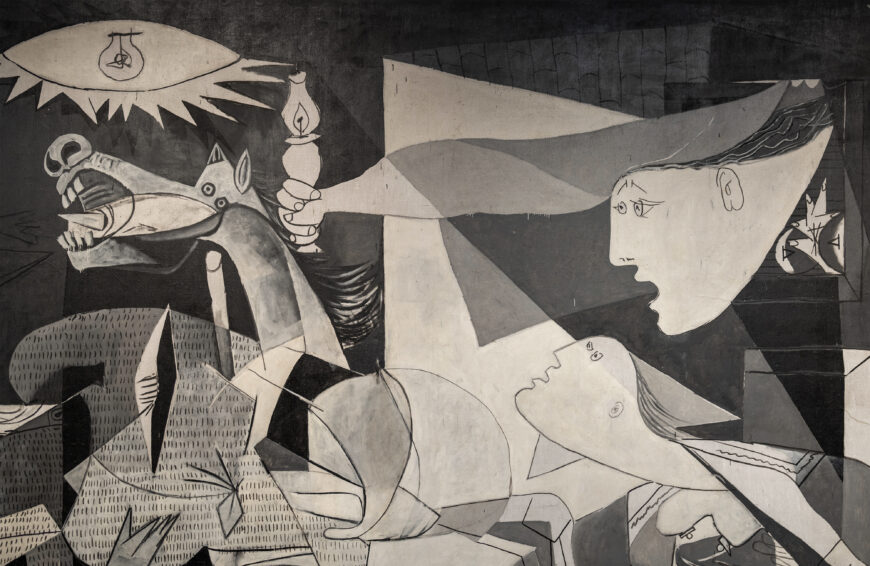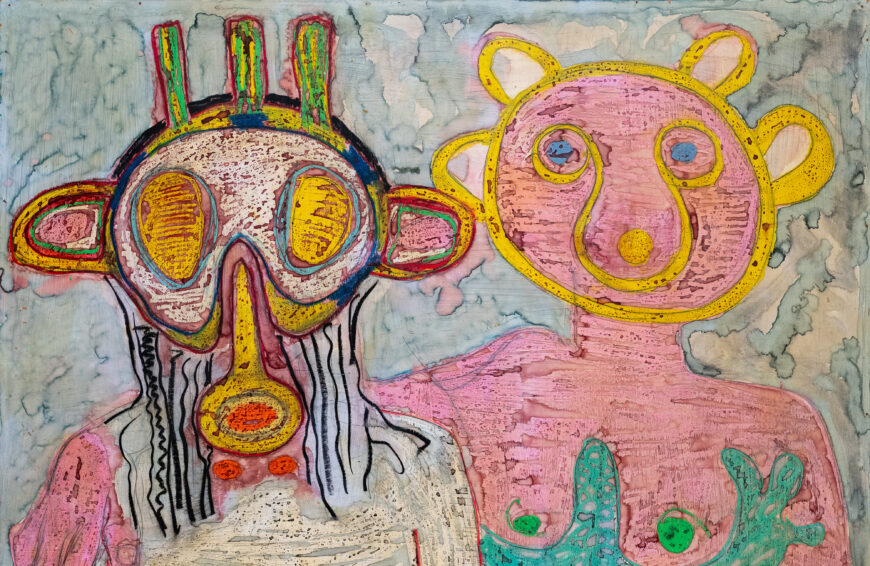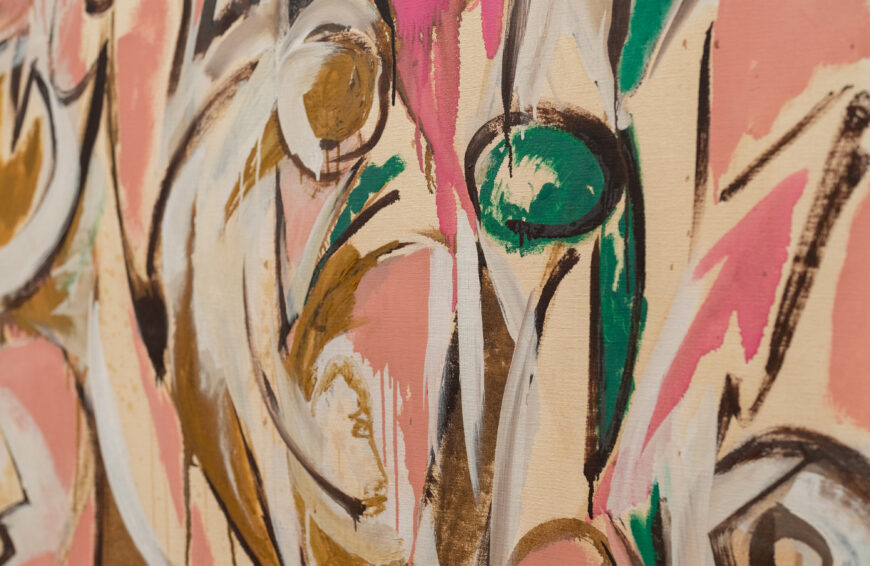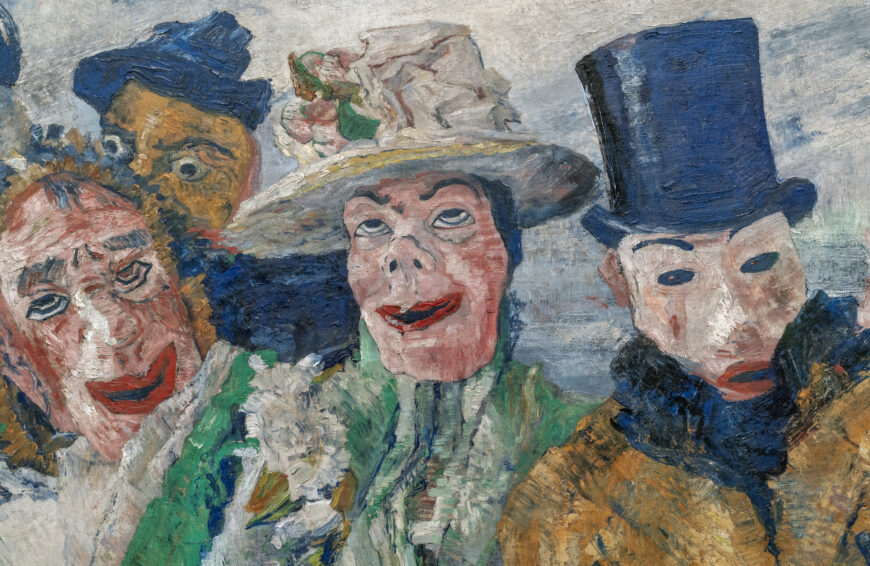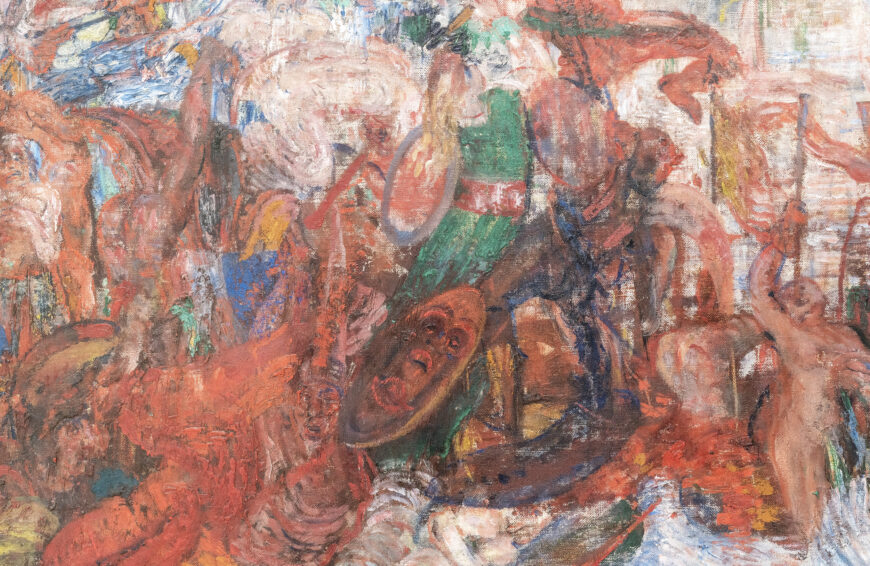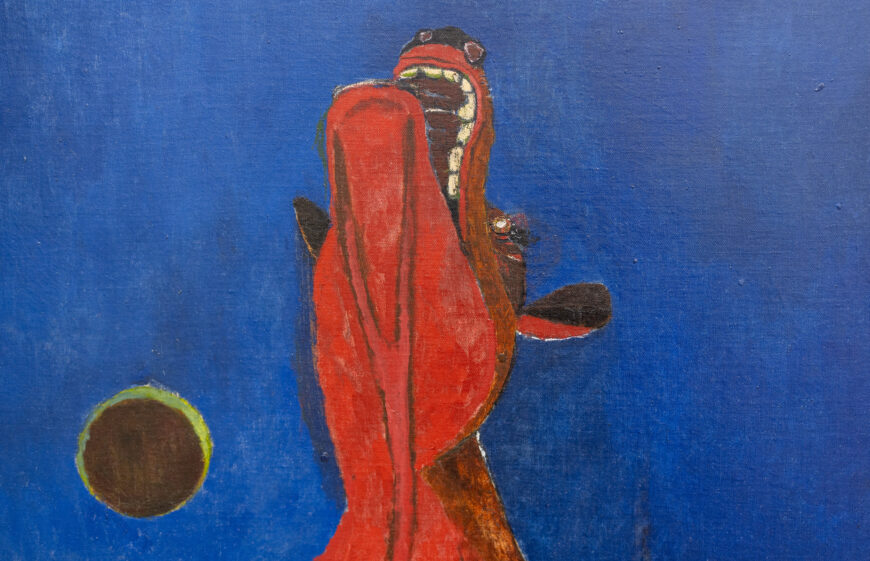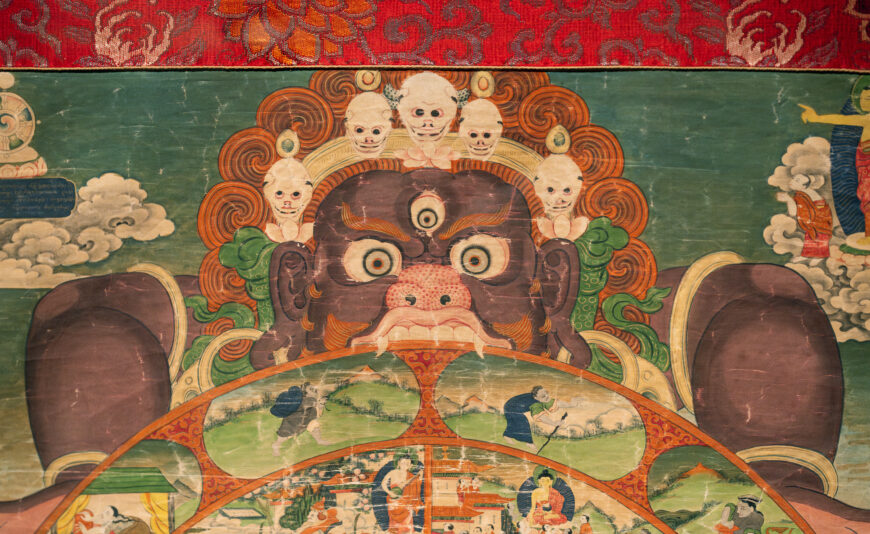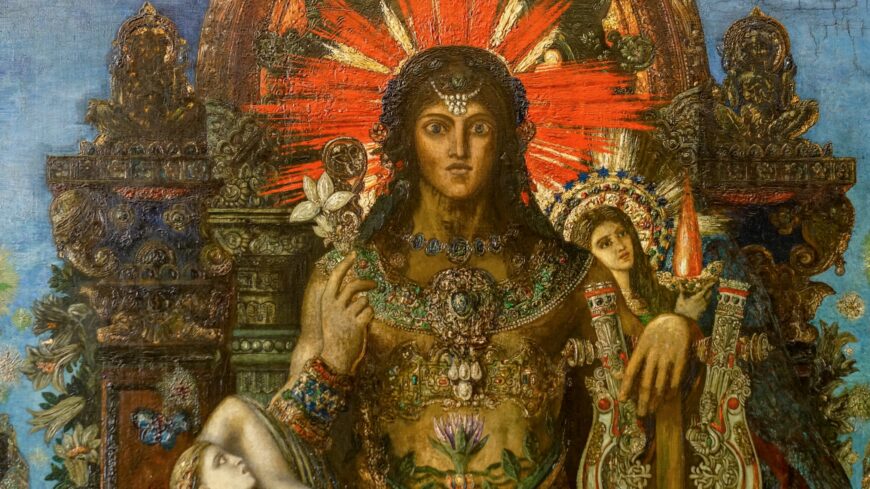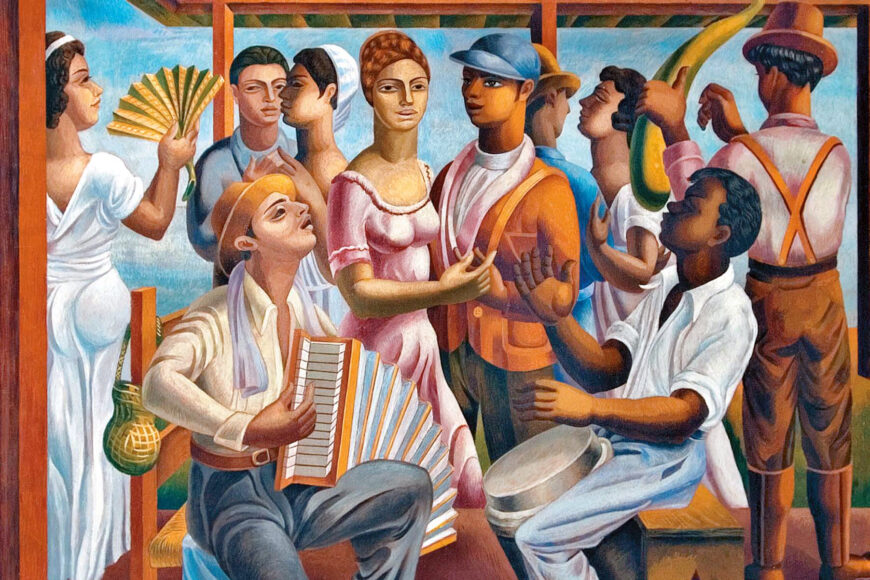George Benjamin Luks, Street Scene (Hester Street), 1905, oil on canvas, 65.5 x 91.1 cm (Brooklyn Museum, 40.339, Dick S. Ramsay Fund) Speakers: Dr. Margarita Karasoulas, Assistant Curator of American Art, Brooklyn Museum and Dr. Steven Zucker
George Benjamin Luks, Street Scene (Hester Street)
[0:00] [music]
Dr. Steven Zucker: [0:05] We’re in the Brooklyn Museum, looking at a painting by George Luks called “Street Scene — Hester Street.” It was painted in 1905, when Hester Street was absolutely packed with new immigrants. That’s what we’re seeing here.
Dr. Margarita Karasoulas: [0:21] Hester Street was the symbolic and commercial center of the Jewish Lower East Side. Here, Luks has chosen to depict a market scene. We see two groups of men who are gesticulating and conversing with one another. In the center of the composition, a toy peddler who’s demonstrating a toy and his wares to a group of children and to other adults who surround him.
[0:44] There are other shoppers included, one of whom is a woman who’s wearing a red shawl, carrying a basket. She’s hastening towards the left-hand portion of the composition as two other men appear to be moving towards the right.
Dr. Zucker: [0:56] Even though we understand that that woman is moving past, the way that Luks has structured the painting, they are confronting each other. It does, to me, refer to the way that cities bring people together in unexpected ways.
[1:09] As we continue to move to the right across this frieze of figures that are so close to us in the foreground, we can look into a shop doorway. We see a man there. Then, to their right, a woman who is holding a dead, plucked chicken and seems to have perhaps just purchased it from the store behind her.
Dr. Karasoulas: [1:28] In the right-hand portion of the composition, Luks has also placed a pushcart.
Dr. Zucker: [1:32] Then, in the very lower right corner we can see the edge of a basket.
Dr. Karasoulas: [1:36] There’s also this very palpable sense of congestion. The sky is visible only in a small, blue strip at the very top portion of the composition. The tenements, the actual buildings and structures that make up this urban environment, have a sort of oppressive quality to them.
Dr. Zucker: [1:51] It’s impossible to overstate the sheer human density in the Lower East Side at this time.
Dr. Karasoulas: [1:57] There were more than 700 inhabitants per acre by 1905. Between 1880 and 1920, more than 20 million immigrants came to America. This was the greatest period of mass migration in American history.
[2:11] By 1905, the Lower East Side was home to approximately 500,000 Jewish immigrants, most of whom had recently arrived from Eastern and Southern Europe.
Dr. Zucker: [2:20] They came because of economic reasons but also because of political violence, particularly in the wake of the assassination of the czar in Russia. A series of pogroms were inflicted on Jews, that is, violent attacks on Jewish towns in what was called the Pale. That is, areas in Poland and the eastern edge of the Austrian-Hungarian Empire.
Dr. Karasoulas: [2:42] I think it’s important to account for the fact that Jewish immigrants came not only voluntarily but as refugees fleeing the state-sanctioned violence. With the increased arrival of Jewish immigrants to the United States also came this rising nativist sentiment, anti-Semitism that became pervasive in American life and culture during this era.
[3:02] And I think it’s impossible to consider Luks’ painting without taking into account histories of race and immigration during this period. We do know that Luks created a number of anti-Semitic caricatures for several publications during the 1890s that preceded his work on this painting.
[3:18] Like many other writers and artists of this era, he ventured into the Lower East Side with this kind of fixation with the Jewish Lower East Side, with immigrants, and the neighborhoods that they occupied.
Dr. Zucker: [3:29] If you look, for instance, at the physiognomies that are being depicted here, Luks is clearly carrying on this anti-Semitic tradition that had been so common in the press in the late 19th and early 20th centuries.
Dr. Karasoulas: [3:40] What we know is that Luks talked about “hunting types” in the Lower East Side.
Dr. Zucker: [3:45] This was a moment when there was fascination with the Lower East Side in more established and genteel parts of Manhattan. People would, just like Luks, come and visit on market days to see the hubbub, to see the activity, to see these exotic foreigners.
Dr. Karasoulas: [4:02] This type of unidealized subject matter was what was considered most revolutionary about the Ashcan School, the fact that they were not looking to genteel subject matter or genteel areas of the city, but it is important to think about the unequal power dynamics that are really implicit in these kinds of paintings.
[4:19] It’s something that’s not readily apparent, but Luks ventured into these areas with this express purpose in mind.
[4:25] [music]
| Title | Street Scene (Hester Street) |
| Artist(s) | George Benjamin Luks |
| Dates | 1905 |
| Places | North America / United States |
| Period, Culture, Style | Modernisms / Realism / Ashcan School |
| Artwork Type | Painting |
| Material | Oil paint, Canvas |
| Technique |
This painting at the Brooklyn Museum
A short biography of Luks at the National Gallery
A teaching guide and resources on the Lower East Side from the New York Public Library
Tenement Museum web page on the Lower East Side
Primary sources related to Jewish immigration from the Library of Congress
Read more about Jewish immigration in the wake of the pogroms
Read about immigration through Ellis Island
Take a virtual tour of Ellis Island
Watch a 1903 movie documenting a market on the Lower East side
Key ideas
- Between 1880 and 1920, more than 20 million immigrants came to America, making it the greatest period of mass migration in American history. Many recent Jewish immigrants had fled economic hardship and political violence within the Russian Empire.
- At the time Luks painted Street Scene, New York’s Lower East Side was home to approximately 500,000 Jewish immigrants, and it was the most densely populated place on earth. The tenement buildings that surround the scene blot out all but a small sliver of blue sky, adding to this painting’s sense of the congestion of this neighborhood.
- With growing Jewish immigration came rising nativist and antisemitic sentiment. While members of the Ashcan School, like George Luks, were revolutionary in their inclusion of unidealized urban subjects, their paintings preserved stereotypes and unequal dynamics of power. Luks had produced antisemitic caricatures for several publications during the 1890s, and the emphasis on racist stereotypes about Jewish phyisognomy can be seen in the painting.
More to think about
Look closely at Street Scene. What aspects of the painting do you think reveal the nativist and antisemitic sentiments the video mentions? What aspects humanize the people? How do modern images of immigration deal with similar issues?


